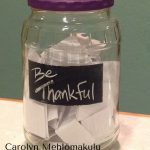In my last post a few weeks ago, I wrote about using scribble drawings as a relaxation exercise. Scribble drawings can also be used in other ways for art in therapy.
Intuitive Scribbles
Another art therapy approach using scribble drawings is to create a scribble, look for the images or inspiration in the scribble, and then embellish the scribble to enhance the image.
This can be beneficial as a way to tap into the unconscious. After completing your drawing, take some time to think about what your drawing is expressing or telling you. How does the image you created represent something that you have been feeling, experienced, or need to know? It can also be helpful to explore how the process was. How does it feel to allow yourself to scribble and create such a free form or imperfect drawing? Are you comfortable with this experience of letting go and tapping into your emotions and unconscious images?
No Judgment Scribbles
Another scribble-type activity that I have found beneficial in therapy is one that I discovered via The Art Therapy Blog. The activity is called “What’s my line: drawing and art activity to help with self criticism and judgment.”
This intervention is presented as a group activity, but I have also used this in individual sessions and family sessions. In the original directive, each person is given ten sheets of paper and puts five lines on each page. You then pass your stack of pages to the next person, and a time limit is set to turn all of the lines into drawings, allowing only one minute per drawing. You can easily adapt this directive to be scribbles instead of five lines or change the number of pages depending on your clients.
I have found this to be a helpful activity for addressing perfectionism and criticism. The individual must silence their inner critic and turn off the worry about making a “perfect” drawing. As a family activity this can also provide for a fun and enjoyable interaction, although some family members may need to be coached to avoid criticism of the drawings of others.
I have also found this activity to be a good grounding or distraction activity in individual sessions. When a client is feeling overwhelmed and needs a positive, distracting activity before ending the session, this intervention can be helpful to shift toward a more positive mood.
Please share your thoughts in the comments! Do you use scribble drawings in therapy or your own art creation?
For more ideas and tips about art in therapy, be sure to sign up for the newsletter: http://eepurl.com/bOu5yj
Carolyn Mehlomakulu, LMFT-S, ATR is an art therapist in Austin, Texas who works with children, teens, and families. For more information about individual therapy, teen and child counseling, family therapy, teen group therapy, and art therapy services, please visit: www.therapywithcarolyn.com.
This blog is not intended to diagnose or treat any mental health conditions. All directives, interventions, and ideas should be used by qualified individuals within the appropriate bounds of their education, training, and scope of practice. Information presented in this blog does not replace professional training in child and family therapy, art therapy, or play therapy.
This blog includes affiliate links (see full disclosure here). If you’d like to help support the blog without any extra cost to you, please click through on Amazon links and shop as you normally would. Your support is greatly appreciated!






These 3 scribble posts are great, I’m going to share them with my Facebook friends at Hope and Healing at Home tomorrow on my Facebook live “Art Therapy Thursday”. I’m excited to tell others about your site and resources and this will be a great tie in as I’m focusing on using scribble drawings to help build communication and trust between people. Thanks for sharing great ideas 🙂 If you’d ever like to participate as a guest “speaker” or write a guest blog please let me know, I’d love to help others find you.